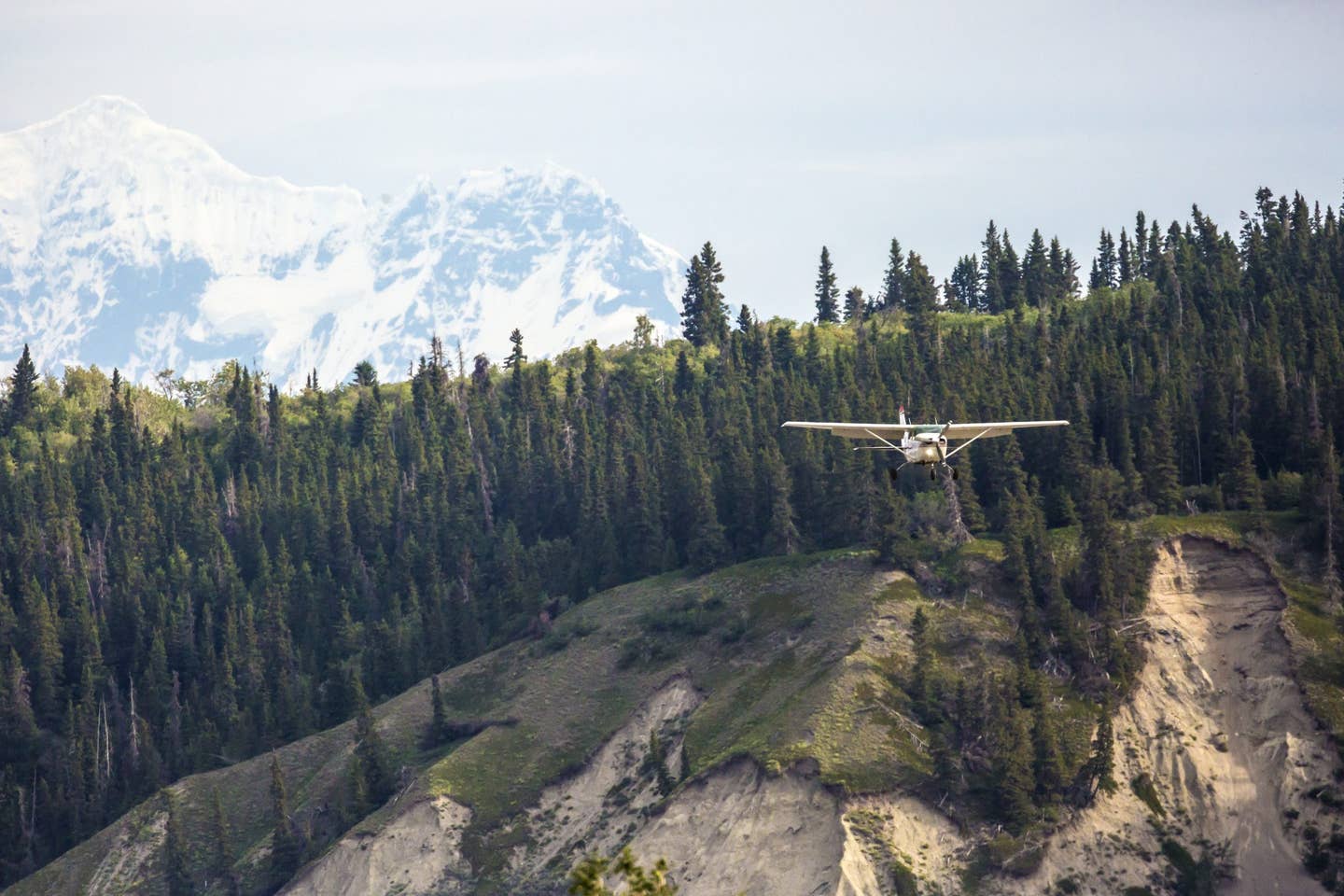
An airplane lands at a small airport in Wrangell-St. Elias National Park in Alaska. Adobe Stock
Alaska’s pilots need access to better weather reporting and forecasting, improved navigation charting, and expanded satellite-based air-traffic control coverage, the FAA said this week.
The safety recommendations made by federal aviation officials acknowledge Alaska’s unique weather and geographic challenges. Alaska is twice the size of Texas and has 14 mountain ranges, which leaves about 82 percent of communities accessible only by air.
Enplanements in the state are 7.1 times the state population compared to 2.8 times the population in the lower 48, FAA said.
“Alaska depends on aviation more than any other state, and we are committed to doing everything possible to make flying safer,” FAA administrator Steve Dickson said Thursday.
FAA’s safety recommendations include:
- Installing automated weather observing systems (AWOS) at airports that don’t have them and continuing tests of visual weather observation system (VWOS) technology.
- Developing a comprehensive Alaska airspace navigation strategy that would include creating lower-altitude flight routes and improving GPS backup systems.
- Continuing a collaborative working group initiative in partnership with the Aircraft Owners and Pilots Association (AOPA) to verify and add mountain pass information on aeronautical charts.
- Continuing efforts to expand automatic dependent surveillance-broadcast (ADS-B) ATC coverage and continuing outreach efforts to encourage operators to equip their aircraft with ADS-B.
- Continuing existing safety outreach initiatives.
FAA’s focus on safety related projects is appreciated by pilots in the state, one AOPA official told FLYING.
“It’s a good first step and we are hopeful that the process the FAA is still developing to coordinate across their lines of business will help expedite their completion,” said AOPA Alaska Regional Manager Tom George. “Adding weather reporting stations and other aviation infrastructure will benefit all segments of the aviation community.”
With flight dependence comes greater risk, according to accident data.
Between 2008 and 2017, Alaska’s accident rate was 2.35 times higher than that of the rest of the country, and the fatal accident rate was 1.34 times higher, the National Transportation Safety Board (NTSB) reported last year.
Alaskan Aviation By the Numbers
“Today’s action by the FAA is a step forward in addressing Alaska’s unique place in aviation safety,’’ NTSB chair Jennifer Homendy said following the release of the recommendations. “But more needs to be done to ensure air transportation is as safe in Alaska as in the rest of the nation.”
The recommendations come as tests of VWOS—which uses sensors attached to weather cameras to provide critical information at airports where no weather reporting systems are available—are currently underway at four airports in Alaska, the FAA said last month.
“Sensors attached to existing cameras provide pilots with information including visibility, wind speed and direction, temperature, dew point and air pressure—as well as images from the camera systems,” FAA deputy regional administrator for the Alaskan Region Jacki Holzman said. “VWOS is a potential lower-cost supplement to our current, highly valuable automated weather-reporting stations, which provide weather data without images.”
The FAA said a draft roadmap of how the recommendations could be implemented is expected by February 15, 2022. The agency will then seek aviation stakeholder feedback through May 2022.
You can read the full FAA Alaska Aviation Safety Initiative report here.

Sign-up for newsletters & special offers!
Get the latest FLYING stories & special offers delivered directly to your inbox






